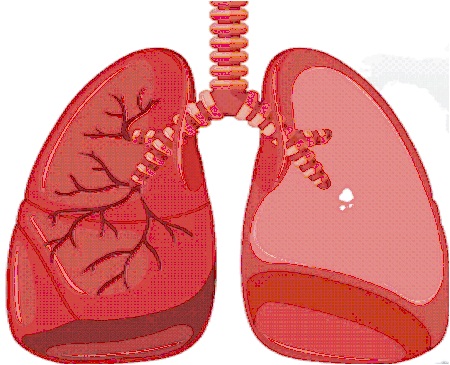Tuberculosis epidemic in Nigeria

Kemi Olatunde
|
Tuberculosis (TB) is an infectious disease that usually affects the lungs. It is sometimes fatal. Symptoms include coughing, phlegm, and more. Doctors may prescribe antibiotics for TB.
In the past, tuberculosis (TB), or “consumption,” was a major cause of death worldwide. Following improvements in living conditions and the development of antibiotics, the prevalence of TB fell dramatically in industrialized countries.
However the number started to rise again in the 1980s. The World Health Organization (WHO) described it as an “epidemic”. It reports that it is the 13th leading causeTrusted Source of death globally and “the second leading infectious killer after COVID-19”.
According to research, WHO estimates that in 2020, nearly 10 million people worldwide developed TB and 1.5 million people died from the disease, including 214,000 people who also had HIV.
Currently, antibiotic resistance is causing renewed concerns about TB among experts. Some strains of the disease are not responding to the most effective treatment options. In this case, TB is difficult to treat.
It is observed according to findings that a person may develop TB after inhaling Mycobacterium tuberculosis (M. tuberculosis) bacteria, primarily from person to person.
When TB affects the lungs, the disease is the most contagious, but a person will usually only become sick after close contact with someone who has this type of TB.
An individual can have TB bacteria in his/her body and never develop symptoms. In most people, the immune system can contain the bacteria so that they do not replicate and cause disease. In this case, a person will have a TB infection but not an active disease.
Doctors refer to this as latent TB. An individual may never experience symptoms and be unaware that they have the infection. There is also no risk of passing on a latent infection to someone else. However, a person with latent TB still requires treatment.
Without medical intervention, TB becomes active in 5–10 percent of people with the infection.
The risk of developing active TB is higher in anyone with a weakened immune system, anyone who first developed the infection in the past two to five years, older adults and young children, people who inject recreational drugs, and people who have not previously received appropriate treatment for TB
A person with latent TB will have no symptoms, and no damage will show on a chest X-ray. However, a blood test or skin prick test will indicate that they have a TB infection.
An individual with TB disease may experience a cough that produces phlegm, fatigue, a fever, chills, and a loss of appetite and weight. Symptoms typically worsen over time, but they can also spontaneously go away and return.
M. tuberculosis bacteria cause TB. They can spread through the air in droplets when a person with pulmonary TB coughs, sneezes, spits, laughs, or talks.
Only people with active TB can transmit the infection. However, most individuals with the disease can no longer transmit the bacteria after receiving appropriate treatment for at least 2 weeks.
It is important to seek medical attention when one observes that he/she has a persistent cough, lasting at least 3 weeks, phlegm, which may have blood in it, when they cough, a loss of appetite and weight, a general feeling of fatigue and being unwell, swelling in the neck, a fever, night sweats, and chest pain.
TB usually affects the lungs, though symptoms can develop in other parts of the body. This is more common in people with weakened immune systems.
TB can cause persistently swollen lymph nodes, or “swollen glands”, abdominal pain, joint or bone pain, confusion, a persistent headache, seizures, etc.
With early detection and appropriate antibiotics, TB is treatable.
The right type of antibiotic and length of treatment will depend on the person’s age and overall health, whether they have latent or active TB, the location of the infection, and whether the strain of TB is drug-resistant among others.
Treatment for latent TB can vary. Trusted Source It may involve someone taking an antibiotic once a week for 12 weeks or every day for 9 months.
Treatment for active TB may involve taking several drugs for 6–9 monthsTrusted Source. When a person has a drug-resistant strain of TB, the treatment will be more complex.
People need to complete the full course of treatment, even if symptoms go away. If a person stops taking their medication early, some bacteria can survive and become resistant to antibiotics. In this case, the person may go on to develop drug-resistant TB.
According to the Ondo State Programme Manager, TB, Mrs. Foyinsola Olumagba, ways of preventing TB from infecting others include getting a diagnosis and treatment early, staying away from other people until there is no longer a risk of infection and wearing a mask, covering the mouth, and ventilating rooms.
She said that the duration of treatment is six months stating that its treatment is free in all health facilities across the state.
She noted that the best way to curb its death is to ensure that “immediately one gets diagnosed of it, treatment should be commenced immediately as the more one carries it, the more hazardous it is to the patient.
“Also, when you notice people that have cough around you, encourage them to get treatment to prevent the spread as it is an airborne disease. It is important to know that a patient can infect between one and fifteen persons in a year.”












